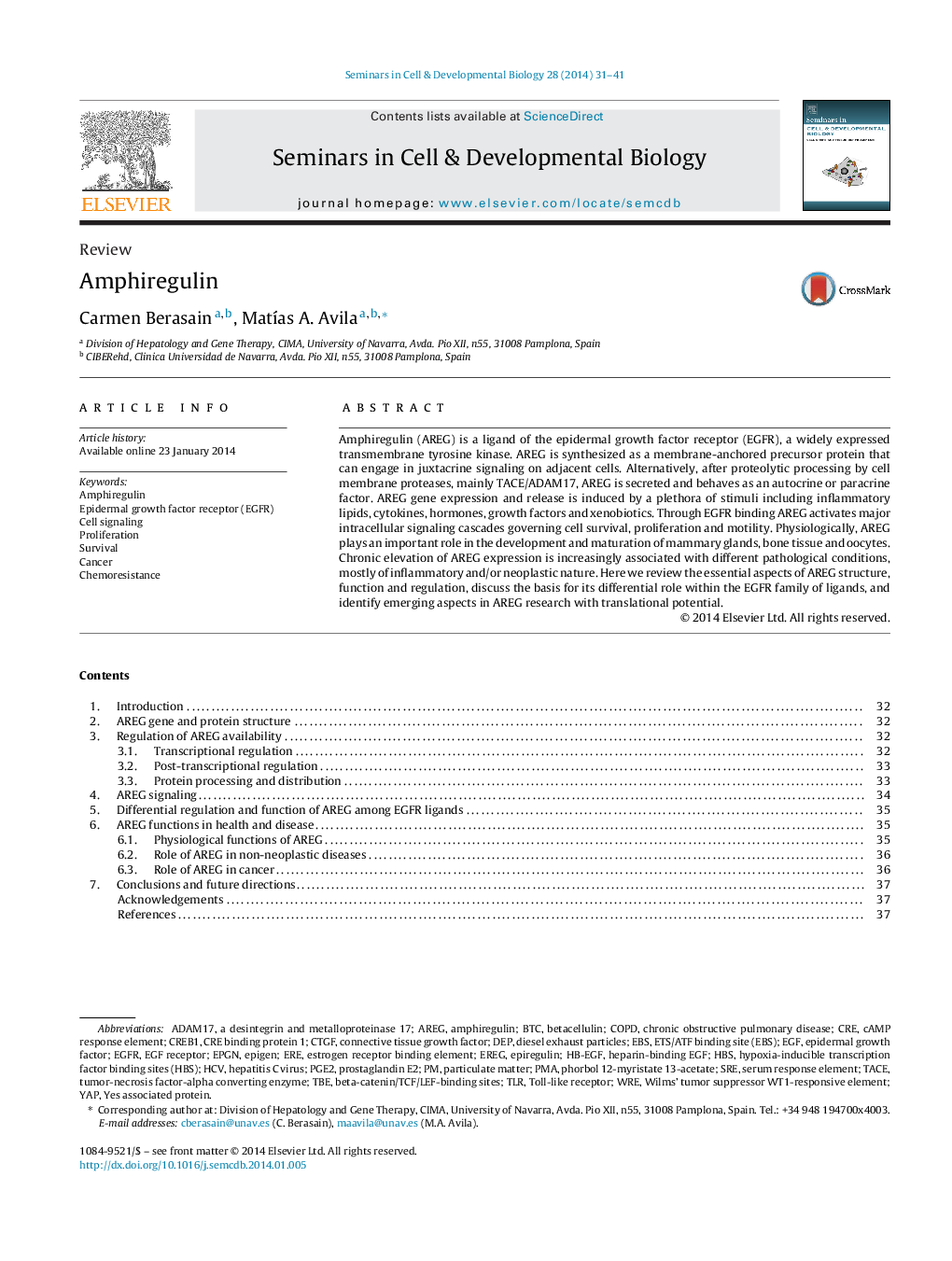| کد مقاله | کد نشریه | سال انتشار | مقاله انگلیسی | نسخه تمام متن |
|---|---|---|---|---|
| 2202636 | 1551394 | 2014 | 11 صفحه PDF | دانلود رایگان |
• Amphiregulin binds EGFR and signals in juxtacrine, autocrine and paracrine manners.
• Amphiregulin stimulates cell growth, survival and migration.
• Amphiregulin influences oocyte maturation, and bone and mammary gland development.
• Amphiregulin is induced in inflammation, modulates immunity and is pro-fibrogenic.
• Amphiregulin is up-regulated in many cancers and promotes tumor development.
Amphiregulin (AREG) is a ligand of the epidermal growth factor receptor (EGFR), a widely expressed transmembrane tyrosine kinase. AREG is synthesized as a membrane-anchored precursor protein that can engage in juxtacrine signaling on adjacent cells. Alternatively, after proteolytic processing by cell membrane proteases, mainly TACE/ADAM17, AREG is secreted and behaves as an autocrine or paracrine factor. AREG gene expression and release is induced by a plethora of stimuli including inflammatory lipids, cytokines, hormones, growth factors and xenobiotics. Through EGFR binding AREG activates major intracellular signaling cascades governing cell survival, proliferation and motility. Physiologically, AREG plays an important role in the development and maturation of mammary glands, bone tissue and oocytes. Chronic elevation of AREG expression is increasingly associated with different pathological conditions, mostly of inflammatory and/or neoplastic nature. Here we review the essential aspects of AREG structure, function and regulation, discuss the basis for its differential role within the EGFR family of ligands, and identify emerging aspects in AREG research with translational potential.
Journal: Seminars in Cell & Developmental Biology - Volume 28, April 2014, Pages 31–41
